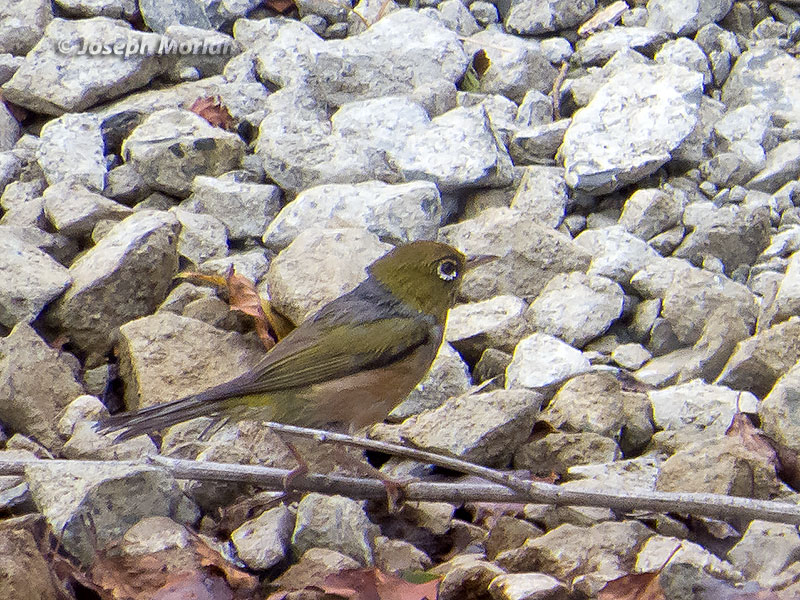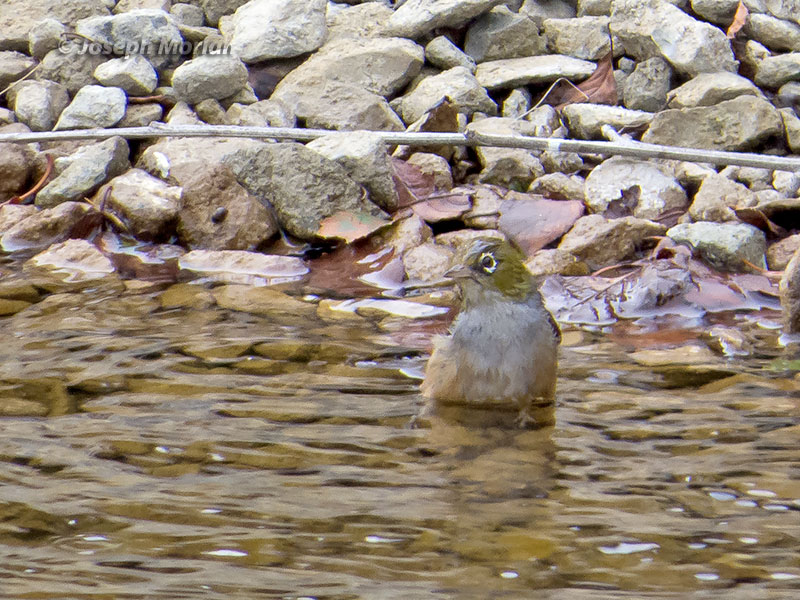

This species is believed to have colonized New Zealand from Australia on its own. First noted in 1832 but not established until 1856 when great numbers appeared on both North and South Islands. By the 1920's it was considered New Zealand's most common landbird. Since then numbers have declined, but large population fluctuations mask any general trends. This species exhibits extensive geographic variation with many named subspecies. Birds in New Zealand are the nominate race. Races vary in color of back and flanks with the nominate race generally darker and more strongly marked. The Silver-eye is in the White-eye family (Zosteropidae), a large assemblage and old-world birds sometimes included in the Babblers (Timaliidae). IOC, HBW and OSNZ removed the hyphen from the Silver-eye's English name but these authors retain the hyphen in White-eye. I completely understand why White-eye needs a hyphen, but these differing spellings seem inconsistent. Canon PowerShot SX50 HS.
References:
Armitage, I. 2013 [updated 2015]. Silvereye. In Miskelly, C.M. (ed.) New Zealand Birds Online. www.nzbirdsonline.org.nz
van Balen, B. & Christie, D.A. (2017). Silvereye (Zosterops lateralis). In: del Hoyo, J., Elliott, A., Sargatal, J., Christie, D.A. & de Juana, E. (eds.). Handbook of the Birds of the World Alive. Lynx Edicions, Barcelona. (retrieved from http://www.hbw.com/node/60213 on 2 April 2017).
Higgins, P.J.; Peter, J.M.; Cowling, S.J. (eds.) 2006. Handbook of Australian, New Zealand and Antarctic birds. Vol. 7, boatbill to starlings. Oxford University Press, Melbourne.